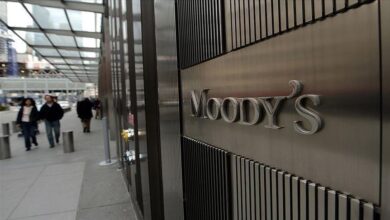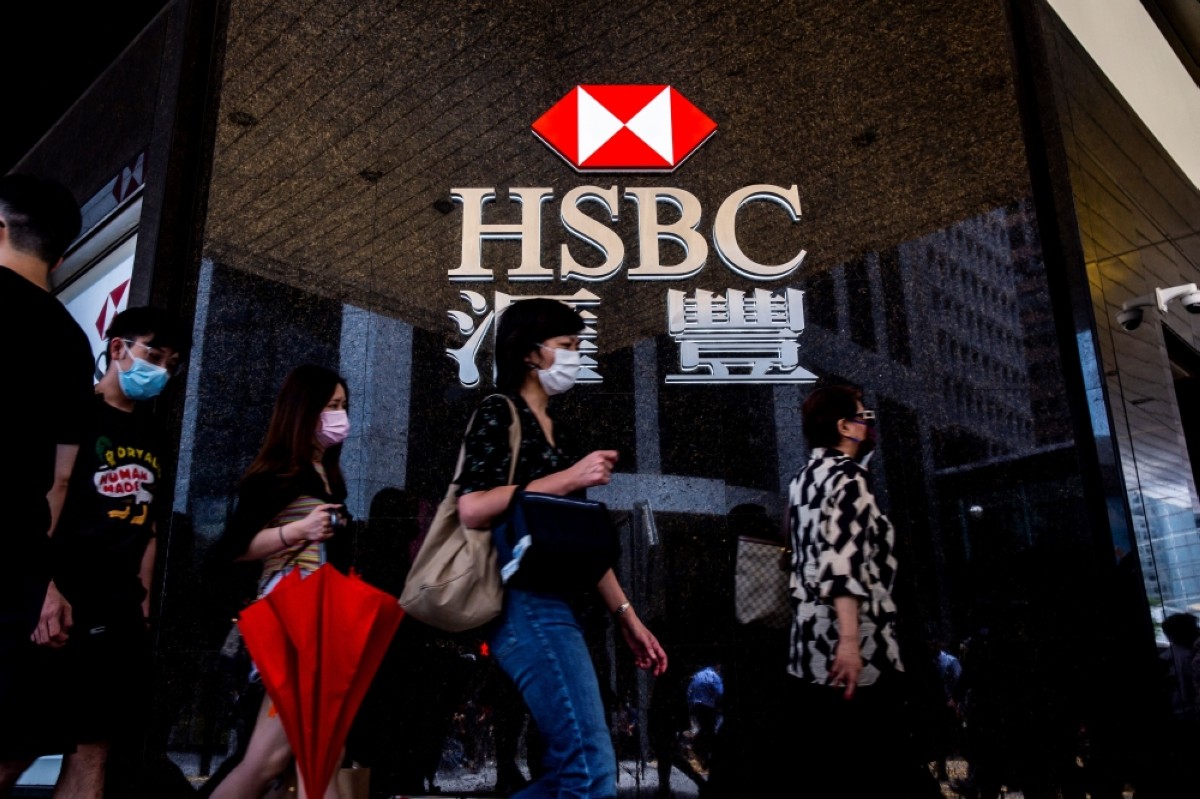Moody’s downgrades many US banks as recession risks grow
WASHINGTON: Moody’s cut the credit ratings of a host of small and mid-sized US banks and placed several big Wall Street names on negative review.

The firm lowered the ratings of 10 banks by one rung, while major lenders Bank of New York Mellon, US Bancorp, State Street, Trust Financial, Cullen/Frost Bankers and Northern Trust are now under review for a potential downgrade. Moody’s also changed its outlook to negative for 11 banks, including Capital One, Citizens Financial and Fifth Third Bancorp.
Among the smaller lenders receiving an official ratings downgrade were M&T Bank, Pinnacle Financial, BOK Financial and Webster Financial. US banks continue to contend with interest rate and asset-liability management (ALM) risks with implications for liquidity and capital, as the wind-down of unconventional monetary policy drains system-wide deposits and higher interest rates depress the value of fixed-rate assets, said Moody’s Investors Service in its latest report. Many US banks’ Q2 results showed growing profitability pressures that will reduce their ability to generate internal capital.
This comes as a mild US recession is on the horizon for early 2024 and asset quality looks set to decline from solid but unsustainable levels, with particular risks in some banks’ commercial real estate (CRE) portfolios. Combined, these factors underpinned our 7 August rating actions on 27 US banks, the report said. Rising funding costs and declining income metrics will erode profitability, the first buffer against losses. US banks’ Q2 results broadly show a rapid rise in the cost of funding. Although the general drain on deposit funding caused by quantitative tightening (QT) moderated in Q2, there remains a significant risk that systemwide deposits will resume their decline in coming quarters.
Most banks’ deposits were flat or down only modestly, but the mix worsened, with non-interest-bearing deposits declining and banks paying more for deposits. The resulting drop in net interest income and net interest margins eroded profitability and, thus, the ability to replenish capital internally. Banks have reduced loan growth to preserve capital, but this will slow the shift of balance sheets toward higher yielding assets, even as funding costs rise and banks deal with a yield curve inversion. Most regional banks have comparatively low regulatory capital versus the largest US banks and global peers. In the current high-rate environment, this leaves some banks with sizable unrealized economic losses that are not reflected in their regulatory capital ratios vulnerable to a loss of investor confidence.
Further, we expect a US recession in early 2024 will worsen banks’ asset quality and increase the potential for capital erosion. A proposed increase in regulatory capital requirements for all banks with assets above $100 billion is credit positive, but in the near term will come with increased regulatory costs and may entail business model changes that strain some banks’ profitability. Further, regulatory tailoring that sets lower capital and liquidity requirements for banks with less than $100 billion in assets is credit negative, and weaker regulations can promote excessive risk-taking at some banks. Asset risk is rising, in particular for small and mid-size banks with large CRE exposures.
Asset quality metrics remain solid across most consumer and commercial lending segments, but have begun to deteriorate and have been unsustainably strong compared with historical pre-pandemic levels. Elevated CRE exposures are a key risk given sustained high interest rates, structural declines in office demand due to remote work, and a reduction in the availability of CRE credit. The Federal Reserve’s rapid tightening of monetary policy – which we identified as a key risk to the sector in November 2022 – continues to have a material impact on the US banking system’s funding and its economic capital, which informs our credit analysis and the 7 August rating actions on 27 US banks.
“The current environment also reminds us that issues beyond Federal Reserve actions can put upward pressure on interest rates, with negative implications for some US banks. For example, in Q3 2022 challenges in the UK gilt market resulted in higher long-dated US Treasury yields that hurt some US banks’ performance. Other non-Fed factors such as heavy Treasury bond issuance and spillovers from monetary policy developments in Japan are also pushing US interest rates higher. The 10-year Treasury yield has risen both Q3 to date and sequentially in Q2 from Q1, even as the yield curve remains inverted, deepening some banks’ ALM risk and profitability pressures,” the report said.
The 7 August rating actions follow previous actions on 13 March and 21 April in response to US banks’ rising interest rate risk and deposit volatility stemming from QT. The growing risks to US banks were also reflected in the change of the US Banking System Outlook to negative in March and the lowering of the Macro Profile for the US banking system to ‘Strong +’ from ‘Very Strong –‘ in April, the report added. US banks’ Q2 results broadly show a rise in the cost of a number of banks’ funding, even as there has been a pause in the general drain on deposit funding caused by ongoing QT.
This pause in pressure on the quantity of deposits was the result of Treasury drawing down its cash balances at the Fed during debt limit negotiations and then rapidly increasing T-bill issuance after the debt limit resolution, both of which supported US banking sector reserve balances at the Fed and, relatedly, deposits. Looking ahead, we expect significant downward pressure to remain on system-wide deposits in coming quarters.











